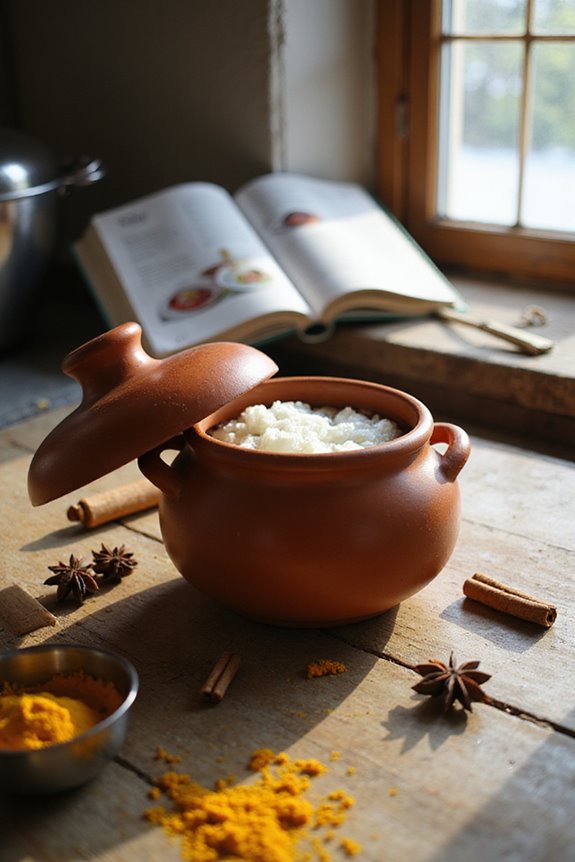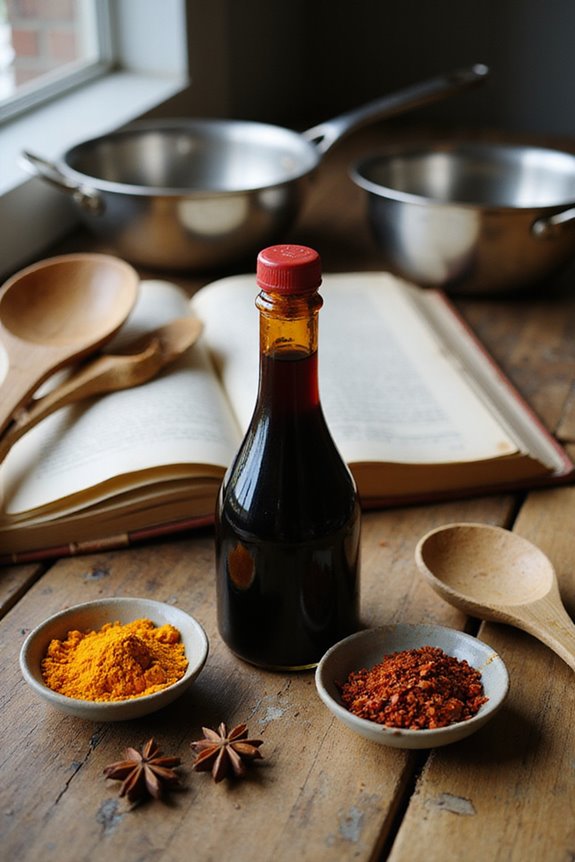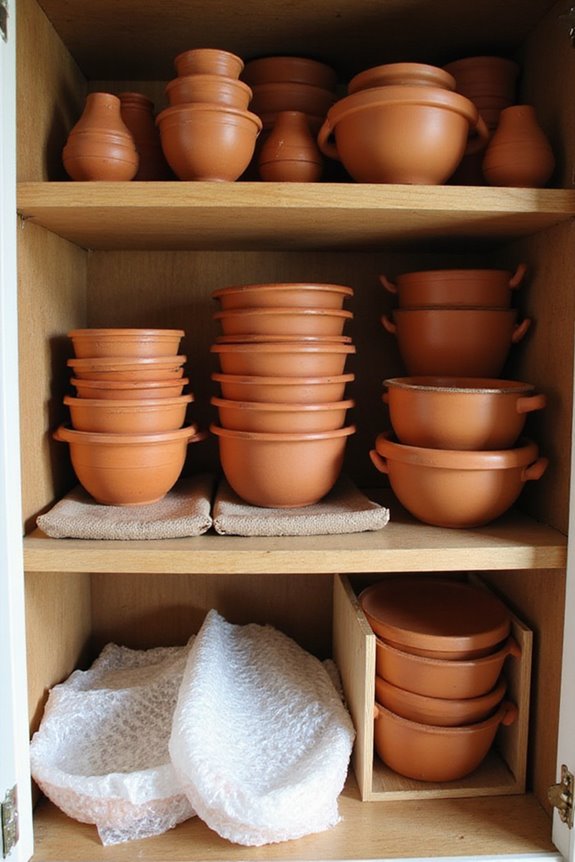Absolutely, we can freeze food in clay pots! Just remember to pick the right ones—choose thicker-walled, natural or glazed pots. Before we freeze, let’s prep with care: soak the pot for 15 minutes to strengthen it, then chill it gradually in the fridge. Wrap it snugly to keep moisture in, and avoid sudden temperature changes. It’s a delightful way to store meals! Want to learn about more magical tips for using clay pots? Stick with us!
Key Takeaways
- Yes, food can be frozen in clay pots if they are designed for freezing and free of cracks.
- Always soak clay pots in water for 15 minutes before freezing to enhance their strength.
- Wrap the clay pot securely in plastic wrap or foil to prevent freezer burn and retain moisture.
- Choose thicker-walled, round-shaped clay pots; they provide better thermal shock resistance and even freezing.
- Ensure pots are completely dry before freezing and avoid sudden temperature changes to prevent cracking.
Understanding Clay Pot Materials
When it comes to understanding clay pot materials, it’s like stepping into a delightful world of natural wonders! Our clay pots are mainly made of clay minerals like kaolinite and montmorillonite, giving them that unique charm.
- The firing temperature affects their strength; higher temperatures transform them into sturdy ceramics.
- We’ve got quartz particles in there too, which help maintain shape during cooking.
As water evaporates, our pots shrink a bit, but they become oh-so-strong post-firing! Plus, feldspar acts as a magical flux, lowering temperatures for that perfect glaze. Additionally, the natural anti-bacterial properties of bamboo cutting boards make them a hygienic choice for food prep.
Preparing Your Clay Pot for Freezing

Preparing your clay pot for freezing is like readying a trusty adventurer before a chilly quest! First, let’s wash our pot with warm water, steering clear of soap—it’s a flavor thief! After cleaning, confirm it dries completely, or it might crack with the cold. Here’s a delightful tip: soak your pot for at least 15 minutes to hydrate the clay—this exciting conditioning method keeps it strong in the freezer.
Now, let’s check for cracks, and always make certain the pot is glazed safely. A well-prepared clay pot helps prevent prolonged water exposure which can cause damage. Gradually chill your pot by placing it in the fridge for 12-24 hours before the freezer adventure. With these magical cleaning techniques, we’re set for culinary success, confirming our clay pots endure the frosty fun!
Choosing the Right Clay Pot for Freezing
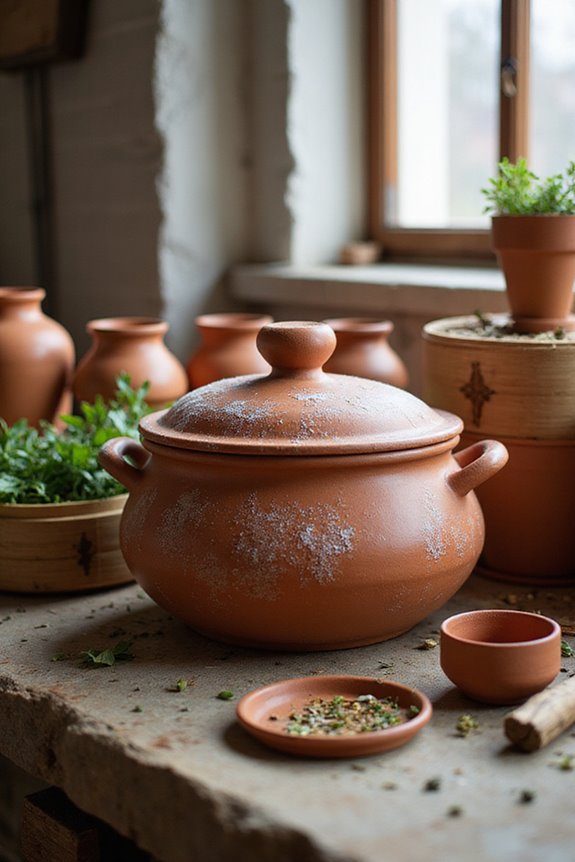
Choosing the right clay pot for freezing can make all the difference, ensuring our food stays safe and delicious. Here’s what we should consider for happy freezing:
- Material Durability: Opt for 100% natural clay or glazed clay pots, as they’re best for food safety. Avoid any mixed materials!
- Pot Design: Pick thicker-walled pots for better thermal shock resistance. Thinner pots might crack like holiday ornaments on a cold day!
- Shape Matters: Round shapes freeze food evenly. Plus, tight-fitting lids help keep our culinary treasures fresh and free from freezer burn.
It’s important to remember that moisture retention in clay pots significantly enhances the flavor and texture of frozen meals. Let’s remember, carefully checking for cracks in terracotta pots is key. With the right clay pot, we’re all set for delightful meals, even in the chill of winter!
Essential Freezing Techniques for Clay Pots
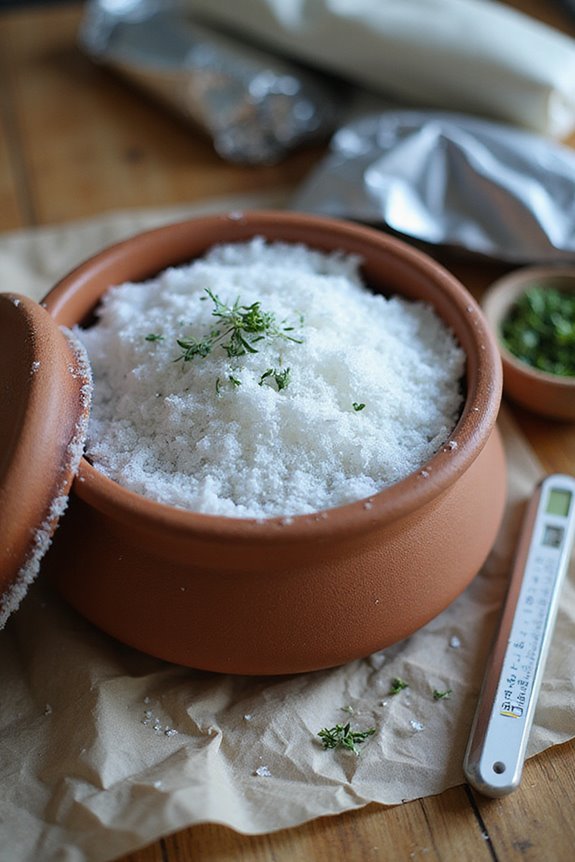
Freezing food in clay pots can be a delightful way to preserve our favorite dishes, but we need to master some essential techniques for success. Here are a few tips to make the magic happen:
- Essential Sealing: We must wrap our pots snugly with plastic wrap or foil to keep moisture in and freezer burn out.
- Optimal Placement: Let’s store our pots on flat surfaces, away from the door! Stability is key to prevent tip-overs. Additionally, make sure to check the cooking temperature guidelines to ensure that any food stored in your clay pot is safe and maintains its quality.
Cooking and Cooling Before Freezing
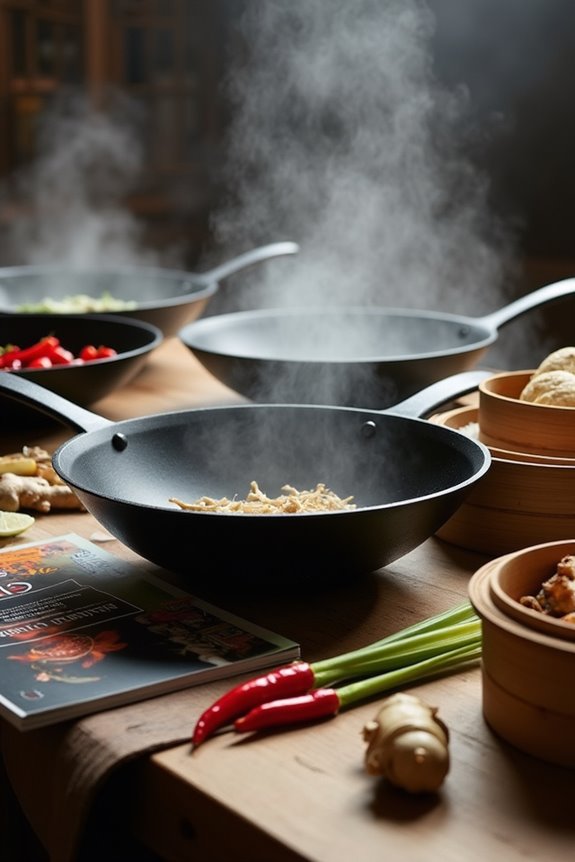
When we think about how to make our food last longer in the freezer, the cooking and cooling process is truly a game changer! Using various cooking methods before freezing helps us preserve that delightful flavor and texture, making meals feel magical, even days later. After whipping up our favorite dishes, we must cool them properly—think of it as giving them a chill before their frosty adventure.
Here are some tips:
- Cooling Techniques: Use shallow containers to speed up cooling.
- Air Circulation: A cooling rack works wonders to let heat escape!
Let’s remember, cooling our food completely not only prevents unwanted surprises but also guarantees a delicious meal awaits us whenever we open that freezer door! Additionally, utilizing appropriate cooking tools ensures consistency and enhances flavor during your meal prep, setting you up for success in the kitchen.
Safety and Handling of Clay Pots
After we’ve taken the time to cool our food properly, safety and handling of clay pots come into play! Let’s explore some essential clay pot safety and handling precautions. First, we must remember that not all clay pots are freezer-safe. We should use pots explicitly designed for freezing to avoid the dreaded cracking fiasco!
- Handle With Care: Clay can become brittle in the freezer, so treat your pots gently.
- Dry Before Freezing: Verify the pot is completely dry to prevent surprises later.
- Avoid Sudden Temperature Changes: Gradual shifts keep our beloved pots intact. Additionally, ensuring that your clay pot is crafted from eco-friendly materials can enhance its durability and performance, especially in extreme temperatures.
Alternatives to Clay Pots for Freezing
So, next time we’re freezing our delicious creations, let’s embrace these magical alternatives for an easier kitchen experience! Happy cooking!
Long-Term Storage and Shelf Life Considerations
Long-term storage and shelf life considerations can be somewhat tricky, especially when clay pots come into play! While these delightful pots add a rustic charm to our kitchens, they’re not always ideal for freezing. Here’s what we should remember:
- Porosity: Clay pots are porous, absorbing moisture and risking cracks or thermal shock when frozen.
- Storage Tip: Always make sure we use glazed, freezer-safe pots with lids for better moisture control.
- Cooling Wonders: For long-term freshness, let’s opt for traditional methods like the pot-in-pot evaporative cooling approach.
Environmental Impact of Using Clay Pots
Here’s why they rock:
- Energy Efficient: They require less energy to produce.
- Less Waste: Reusable, helping reduce single-use plastic waste.
- No Microplastics: They prevent pollution, keeping our planet clean!
When we choose clay pots, we’re making a magical choice for ourselves and the Earth. So let’s embrace those beautiful clay pots and cherish the connection they create with nature, while feeding our families healthy meals! 🌍🍽
Frequently Asked Questions
Can I Freeze Raw Food in a Clay Pot?
We can’t recommend freezing raw food in a clay pot due to durability concerns. For safe raw food storage, let’s choose leak-proof containers instead and keep our culinary adventures both delicious and worry-free.
How Long Can Food Be Frozen in Clay Pots?
When considering freezing duration in clay pots, we should aim for 1 to 3 months for safety. It’s crucial to handle our clay pots carefully, ensuring they’re properly prepared to maintain their integrity during freezing.
Do I Need to Preheat a Clay Pot Before Freezing?
We don’t need to worry about preheating requirements for clay pot materials when freezing. However, let’s make certain we handle them carefully afterward to maintain their integrity and prevent any issues during temperature changes.
Can I Stack Clay Pots in the Freezer?
We shouldn’t stack clay pots in the freezer due to durability concerns. Stacking safety’s compromised, increasing the risk of breakage. Let’s prioritize our pots’ longevity by choosing safer storage methods for our frozen meals.
Is It Safe to Microwave Food in Frozen Clay Pots?
When we consider microwave safety and clay pot durability, we must let frozen pots warm to room temperature first. This way, we protect our cherished kitchenware from cracking and keep our meals safe and delicious.

